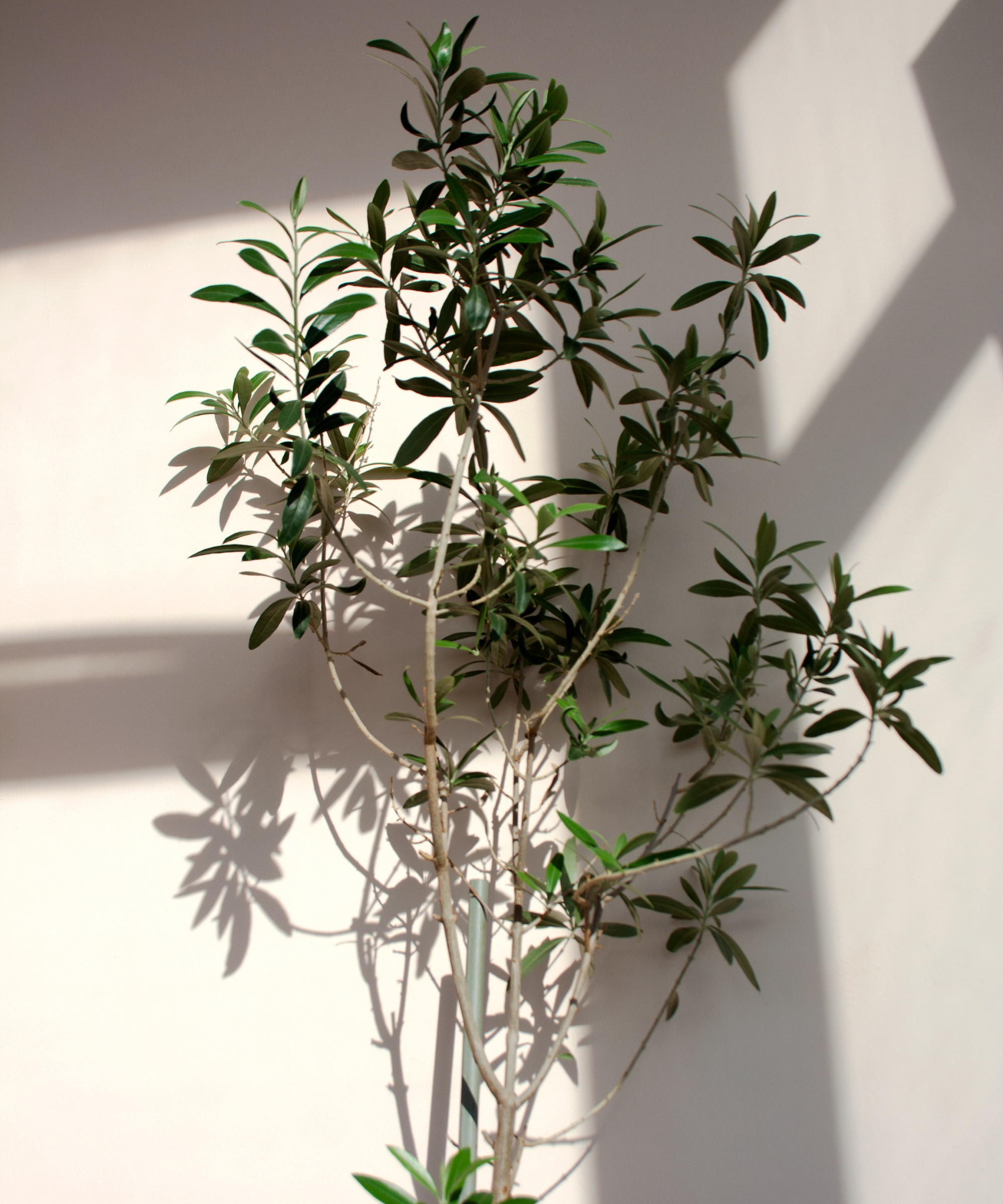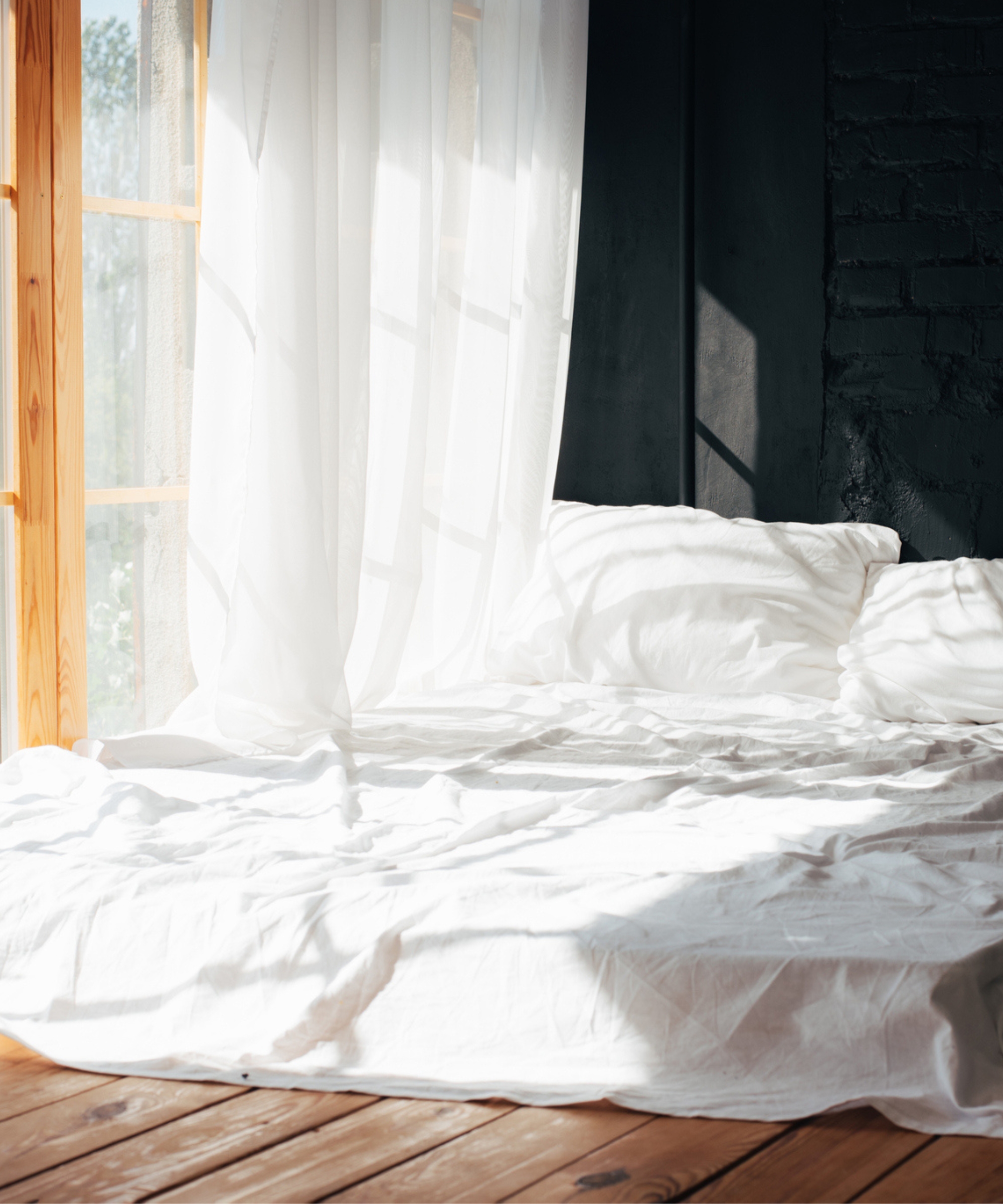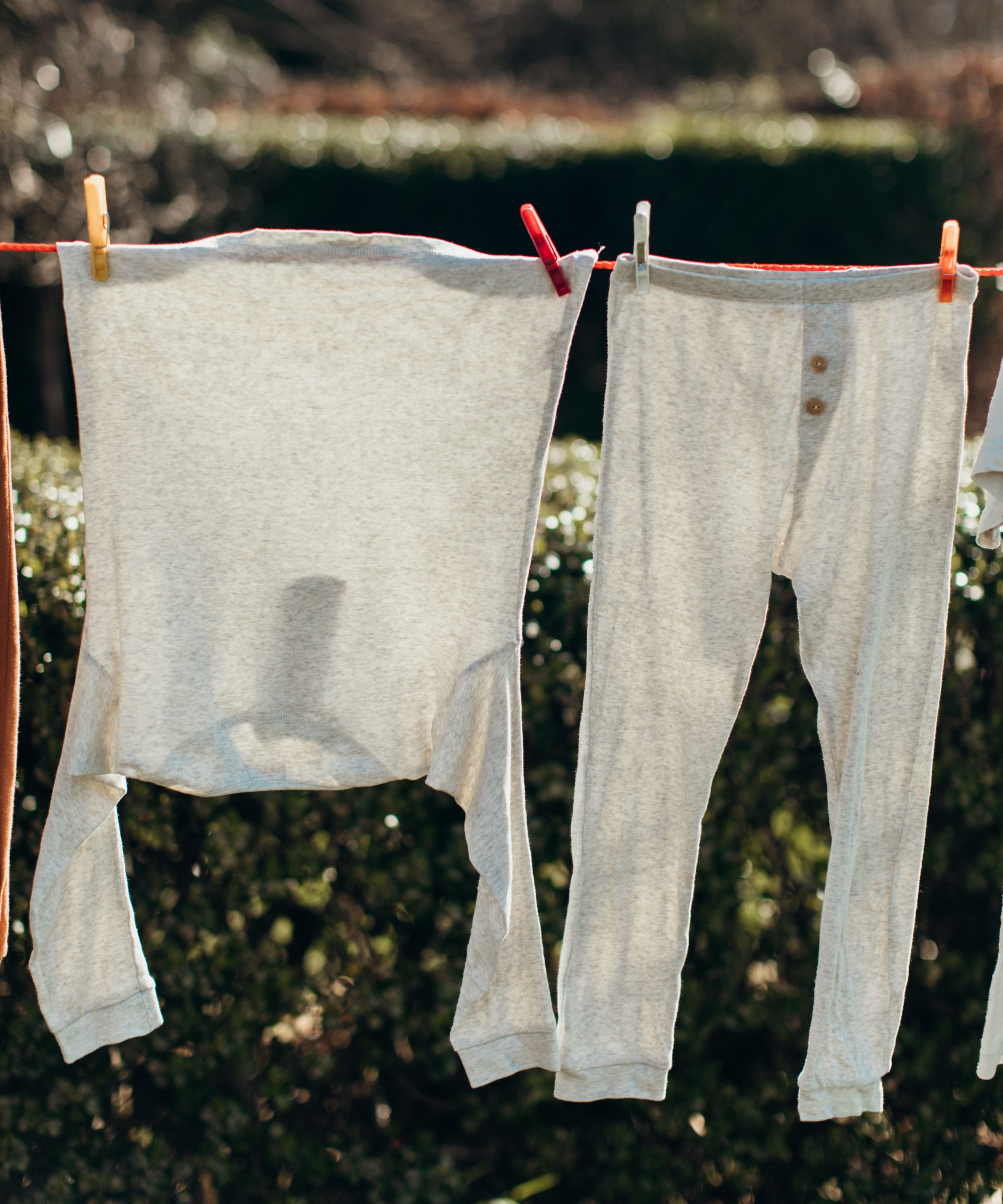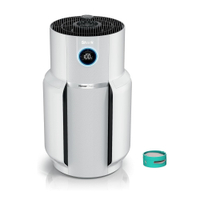Common allergens that plague our homes – and how to combat them
Dyson's research on the science of allergies helps to uncover exactly how they exist in our homes and what we can do to deal with them

Many of us are all too familiar with the effects of our allergies. Being allergic to pollen, dust or pets is highly common, and we have medications and measures in place to minimize the symptoms that we feel from them.
But how much do we know about allergies, really? Allergens exist inside and outside of our homes, and our bodies respond to them in various ways, resulting in symptoms like runny noses or streaming eyes.
Allergic reactions at home can be reduced with the best vacuum cleaners and cleaning tips for allergy sufferers. But the surest way to tackle them is to understand how they work, how they affect us, and what exactly causes these reactions.
The allergens that exist in our homes
You either suffer from allergies or you know somebody who does, but nobody is able to avoid the effects they have. It's so commonly spoken about that it's a natural part of our daily lives - but how much do we really know about them?
Sam Railton, Category Manager of Environmental Care at Dyson, spoke about the science of allergies at the Dyson Tech Office in Malmesbury. In aid of designing effective products for the home, Dyson have researched air quality and dust to uncover how allergens exist and affect us in our homes.
This research is guided by Dyson's Global Connected Air Quality Data Project and Dyson's Global Dust Study.

Sam Railton joined Dyson in 2015 and has been involved in the design of various Environmental Care products. In 2023, Sam took on the position as the Environmental Care Category Manager, where he plays a pivotal role in the development and management of Dyson’s future Environmental Care innovation.
Allergens
'Allergens are probably the most tangible air pollution source within our homes,' Sam explains. The most common allergies found at home are dust, pollen and pet dander; they can manifest in the air but, generally, they build up on the floor. In fact, a large amount of these allergens are generated as a result of man-made activities.
Simply put, an allergy is our body's response to something. 'It’s not necessarily reacting to the thing, it’s your body sensing what it deems is a threat and reacting in response to that threat,' says Sam, adding that 'often this can be an overreactive response to something that is largely not harmful.'
We come into contact with allergens in four key ways:
- Inhalation. Allergens entering your body through the nose can trigger reactions.
- Skin contact. Think: rashes.
- Ingestion. Allergic reactions to the food we eat.
- Injection. Bee stings and medication are two examples.

But it's easy to forget just how many people deal with allergies. A third of people worldwide suffer from some sort of hayfever symptoms. And for those with asthma, it turns out that 80% of asthma sufferers' symptoms are caused by underlying allergens and not the asthma itself, Sam explains.
In a sense, this is why we, as a species, focus more on treating allergy symptoms rather than preventing them. 'We don’t want to say that we shouldn’t have pets because they generate allergens - by the same logic we wouldn’t have any people in our home either.'
Skin cells & dust
It's not at all uncommon to hear of dust allergies. A large number of us will likely sneeze or sniffle when walking into a dusty room, but how does dust actually trigger symptoms?
'Dust itself is made up of a complex cocktail of things, it really varies from home to home. The majority is made up of skin cells that are generally emitted from us, as people living in that house,' says Sam.
Pollen can be part of this cocktail, too. When we open our windows and doors on warm days, pollen can enter the home and settle, mixing with our skin cells in the dust.
But it isn't the dust itself that causes allergic reactions. It's to do with dust mites: the small, microscopic bugs that live in our homes.
'Actually, it’s not the microscopic creatures that are causing the allergens, it’s their faecal matter,' Sam clarifies, adding that these tiny bugs feed off our skin cells and enjoy living in warm, moist conditions. 'As we produce [skin cells] in our warm, heated homes, we’re creating a nice environment for our dust mites to thrive and grow.'
As humans, we individually shed around 2g of skin cells a day. So if you imagine busy households of 4+ people, this can amount to quite a lot over the span of a few weeks. In visual terms, 'humans will shed the equivalent of a golf ball every month.'

This is why it's so important to stay on top of your vacuuming. Vacuum cleaners with HEPA filters can trap at least 99.97% of particles down to the micro-size, including most of the allergens that exist in our home.
Even more so, it's imperative that you vacuum your mattress. Ideally we'd do this once a week, but it should at least be done every time we change the sheets. This is because dust mites thrive in the warmth, and millions of them can be present within the span of a few months, defecating, shedding their skin and reproducing.
The best Dyson vacuums include the Dyson Gen5detect and the Dyson V15 Detect, and they can both detect the exact number of microscopic particles sucked up into their HEPA filters.
Other affordable alternatives like the Shark Cordless Detect Pro or the Ultenic U12 Vesla also have HEPA filters to trap these allergens, and the cordless design makes them easy to use on mattresses.
Pets
According to Dyson's studies, around 57% of people own pets. This has risen significantly since COVID, and it's now easier than ever to keep pets thanks to home working. But surprisingly, only around 10% of owners clean their pet beds.
'When we think about the pets in our homes that generate allergens, it’s actually not the hair, it’s the pet dander,' Sam clarifies. 'Pet dander is the animal’s skin cells.'
Because of the different compositions of different animal hairs, not all vacuums are able to capture pet dander the same as they're able to capture human skin cells. This is where the best vacuums for pet hair come in, as they're able to tackle whatever cells your pets leave behind.

The risk of leaving pet dander unattended at home is due to how tiny these skin cells are. 'These small, fine particles can atomize, and enter the atmosphere,' Sam explains. He uses the example of being sat on the sofa with your dog on your lap, and getting up to make a drink or have a bite to eat:
'That action causes air movement in the room, so if you’ve got any settled skin cells or allergens, they can jump up into the air. That then allows them to enter my body if I’m walking into them; or, if I’m around them, I can easily breathe them in.' So, in effect, pet dander cells settle in the home, and our activity can atomize them.
The best air purifiers are equipped with HEPA filters, and are an effective way to reduce pet dander in the bedroom and beyond, removing other airborne allergens like pollen and dust from any room. The Shark NeverChange Air Purifier MAX is ideal for large spaces and multiple rooms, while the Dyson Purifier is also able to hygienically humidify the room.
Shark NeverChange Air Purifier MAX
In our review of the Shark NeverChange MAX, we found it to be a powerful air purifier at a reasonable price, that can clean a room's air quickly and efficiently. It has pre-filters to avoid having to replace the important HEPA filter within, and you can see exactly how many airborne particles exist in your air.
Pollen
If hay fever wasn't unfortunate enough for the 30%+ of people who suffer from it, it turns out that, in North America, 'pollen season has extended by 20 days over the last 30 years.'
Sam adds that, amongst all the talk around air quality and pollution in cities, this is one example of tangible allergy symptoms that are getting worse, not better. We've also learned that it disproportionately impacts younger people, as '40% of children' suffer from these allergies.
While we put energy into treating hay fever symptoms, there's still a great deal of misconception over where pollen comes from. There are various types of pollen like grass, tree, and weeds; one such type, ragweed, is a pollen attributed to fall/autumn. Ragweed alone has 17 different strains, highlighting that, once broken down, not all pollen is equal.

What's more, pollen isn't exclusive to the warmer seasons. Like ragweed in fall, 'pollen can be equally as bad during other months of the year,' says Sam. 'We need to be aware of it during rainfall - during that season where the air is moist. The pollen seeds can rupture and, as a result of that, they release proteins that sit inside the pollen.'
This is what triggers allergic reactions. It isn't the pollen grain, as many people justifiably believe, it's actually the proteins inside. So, when pollen seeds rupture during wet seasons, hay fever sufferers will start feeling their symptoms.
Every time our windows are open, or when we come home from spending time outdoors, or when we dry our clothes and bed sheets outside - we bring pollen into the house. It mixes with our dust and can become airborne from our activities, so keeping on top of your vacuuming and air purification are some of the best hay fever remedies for the home, along with knowing how to pollen-proof your bedroom.
Dealing with allergens at home is simple. Vacuum up dust regularly. Vacuum your mattress every time you change your sheets. If your windows are open, use the air purifier. If you have pets, consider keeping your air purifier on for a portion of the day when there's a lot of movement.
The best cordless vacuum cleaners can be easily brought out every time you need a clean, or the best robot vacuums can make sure the floor build-up never becomes too great. Also, make sure you know the best place to put an air purifier to maximise on your indoor air quality.
Sign up to the Homes & Gardens newsletter
Design expertise in your inbox – from inspiring decorating ideas and beautiful celebrity homes to practical gardening advice and shopping round-ups.

Dan is the Home Tech Editor for Homes & Gardens, covering all things cleaning, smart home, sound and air treatment across the Solved section. Having worked for Future PLC since July 2023, Dan was previously the Features Editor for Top Ten Reviews and looked after the wide variety of home and outdoor content across the site, but their writing about homes, gardens, tech and products started back in 2021 on brands like BBC Science Focus, YourHomeStyle and Gardens Illustrated.
They have spent more than 200 hours testing and reviewing vacuums for Homes & Gardens, and have even visited Dyson's engineering labs for the full low-down of the ins and outs of our trusty cleaners.
Dan has a BA in Philosophy and an MA in Magazine Journalism. Outside of work, you'll find them at gigs and art galleries, cycling somewhere scenic, or cooking up something good in the kitchen.
-
 7 of the best tomatoes for growing in pots - expert growers pick their top varieties ideal for large harvests from containers
7 of the best tomatoes for growing in pots - expert growers pick their top varieties ideal for large harvests from containersYou can enjoy bumper homegrown harvests in small spaces
By Drew Swainston Published
-
 Drew Barrymore creates a 'balanced' kitchen in 4 easy steps – her rules will make your small, compact countertops feel beautiful
Drew Barrymore creates a 'balanced' kitchen in 4 easy steps – her rules will make your small, compact countertops feel beautifulDrew proves that with the right styling (and chic appliances), you can make even the smallest of kitchens look harmonious
By Hannah Ziegler Published
